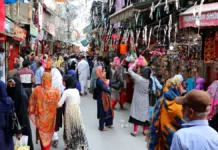
NEW DELHI: Drawing has always been considered the foundation of all art with stalwarts such as M F Husain, Jamini Roy, Laxma Gouda and Manjit Bawa among others devoting time to the visual art form.
A curated showcase of drawings by over 100 artists from India, featuring works dating from 1947 to the present times is now on at the Indira Gandhi National Centre for Arts.
Hosted by Gallery Espace, the show titled “Drawing 2014: Seven Decades of Indian Drawing” has been co-curated by Prayag Shukla along with Annapurna Garimella and Sindhura Jois DM.
The “ambitious show” is part of the 25th anniversary celebrations of the Delhi-based gallery.
Along with works on single sheets of paper, artists’ books, studies for other projects, multiples, laser drawings, animation and more are included in the exhibition.
Referring to the idea of the show, Renu Modi, Director, Gallery Espace says, “It was the legendary M F Husain who introduced me to the finer nuances of drawings and the intimate, small format nature of this genre has remained a personal favorite with me ever since.”
The show “is a curatorial project that explores and showcases the visually exciting and historically-rich practice of drawing in India over the last 67 years,”
“The smoothness of a Jamini Roy drawing, the performative nature of Husain’s own works, drawings by Laxma Goud and Manjit Bawa – these were part of my initial introduction to this genre” says Modi.
The gallery had in the year 1994 held its first show on Drawings.
Apart from the expansive show several outreach events that seek to reflect on the significance of drawings in art and other disciplines are also scheduled to be held in the city.
The show, says curator Annapurna Garimella is “a curatorial project that explores and showcases the visually exciting and historically-rich practice of drawing in India over the last 67 years.”
Over the last 2,000 years, drawing as can be seen in Jain manuscripts, Ajanta murals, or which an image grows in layers.
During the nationalist period, artists attributed ideological power to various ways of drawing.
Jamini Roy, a student of the Abanindranath Tagore, was considered one of the most prominent artists of pre-independence India.
The opening of art schools during the British Raj and the nationalist response to colonial art education eventually led to the creation of an Indian modernism that entered a dialogue with European modernism.
Rabindranath Tagore, for example, requested the Bauhaus in Germany to send an exhibition to India, which in 1922 became the first contemporary European art exhibition to visit the country.
The idea of paintings without figuration or a specific subject appeared in local art culture after this exhibition.
Artists started drawing non-mythological subjects for which new ways of seeing and making forms had to be learned.
The ongoing exhibition also talks about how the method of drawing has changed over time.
Women artists like Paula Sengupta, Rakhi Peshwani and many others use embroidery and textiles as the medium and support for their drawing.
“Even in performance art, drawing is used as means for embodying a concept, artists very often use their skin as a canvas and drawn or write on their body while performing in public,” says the curator.-PTI






